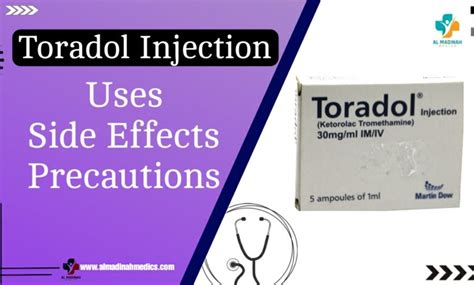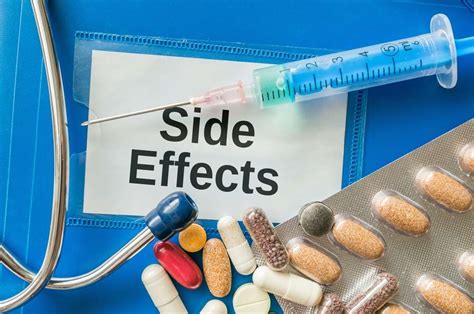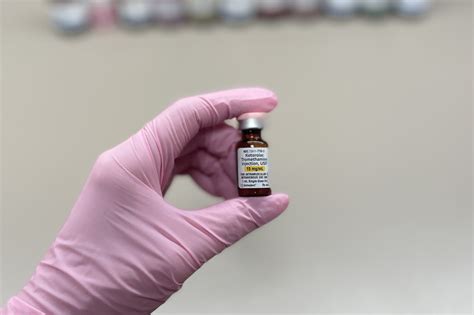Intro
Discover Toradol shot side effects, including injection site pain, nausea, and dizziness. Learn about rare but serious risks like kidney damage and allergic reactions, and understand how to manage ketorolac injection complications.
Pain management is a crucial aspect of healthcare, and various medications are available to alleviate discomfort. One such medication is Toradol, also known as ketorolac, which is often administered via injection, commonly referred to as a Toradol shot. This medication is used to treat moderate to severe pain, usually in emergency situations or after surgery. However, like all medications, the Toradol shot comes with potential side effects that patients should be aware of to make informed decisions about their healthcare.
Understanding the side effects of any medication is vital to ensure safe and effective treatment. The Toradol shot is no exception, and its side effects can range from mild to severe. While many patients may experience minimal or no side effects, others might encounter more significant issues. It's essential to discuss these potential side effects with a healthcare provider to weigh the benefits and risks of using the Toradol shot for pain management.
The Toradol shot is a powerful pain reliever that belongs to the class of nonsteroidal anti-inflammatory drugs (NSAIDs). Its mechanism of action involves inhibiting the production of prostaglandins, which are substances in the body that cause pain. By reducing prostaglandin production, the Toradol shot can effectively alleviate pain. However, this mechanism can also lead to various side effects, some of which may be related to the inhibition of prostaglandin synthesis in different parts of the body.
Toradol Shot Side Effects Overview

The side effects of the Toradol shot can be categorized into common, less common, and rare side effects. Common side effects are those that affect a significant number of patients, while less common and rare side effects occur in fewer individuals. Understanding these categories can help patients identify potential issues early on and seek medical attention if necessary.
Common Side Effects
Common side effects of the Toradol shot include: - Nausea and vomiting - Dizziness or lightheadedness - Headache - Drowsiness - Increased risk of bleeding - Abdominal pain or cramps - Diarrhea - Constipation These side effects are usually mild and may resolve on their own. However, if they persist or worsen, patients should consult their healthcare provider for advice.Less Common Side Effects

Less common side effects of the Toradol shot may include:
- Allergic reactions, such as hives, itching, or difficulty breathing
- Increased liver enzymes, indicating potential liver damage
- Increased risk of heart attack or stroke
- High blood pressure
- Edema (swelling) in the feet, ankles, or hands
- Rash or itching These side effects are more serious and require immediate medical attention to prevent further complications.
Rare but Serious Side Effects
Rare but serious side effects of the Toradol shot include: - Anaphylaxis, a severe allergic reaction that can be life-threatening - Stevens-Johnson syndrome, a condition that causes severe skin and mucous membrane lesions - Toxic epidermal necrolysis, a condition that causes widespread skin necrosis and detachment - Aseptic meningitis, inflammation of the lining around the brain and spinal cord - Severe gastrointestinal events, such as perforation or bleedingManaging Side Effects

To manage side effects associated with the Toradol shot, patients should follow their healthcare provider's instructions carefully. This may include:
- Taking the medication with food to reduce stomach upset
- Avoiding alcohol and other NSAIDs to minimize the risk of bleeding
- Staying hydrated to prevent kidney damage
- Monitoring blood pressure and reporting any changes to the healthcare provider
- Reporting any signs of allergic reactions or other serious side effects immediately
Special Considerations
Certain individuals may be at higher risk for side effects from the Toradol shot, including: - Older adults, who may be more susceptible to bleeding and other complications - Patients with a history of stomach ulcers or bleeding - Patients with kidney or liver disease - Patients with high blood pressure or heart failure - Pregnant or breastfeeding women, as the medication may affect the fetus or babyAlternatives to the Toradol Shot

For patients who experience severe side effects or are at high risk for complications, alternative pain management options may be considered. These include:
- Other NSAIDs, such as ibuprofen or naproxen
- Acetaminophen, which can be used for mild to moderate pain
- Opioid medications, such as morphine or codeine, for severe pain
- Non-pharmacological interventions, such as physical therapy, acupuncture, or cognitive-behavioral therapy
Conclusion and Next Steps
In conclusion, while the Toradol shot can be an effective option for managing moderate to severe pain, it's crucial to be aware of the potential side effects. By understanding these side effects and taking steps to manage them, patients can minimize risks and maximize the benefits of this medication. If you or someone you know is considering the Toradol shot for pain management, discuss the potential side effects and alternatives with a healthcare provider to make an informed decision.We invite you to share your thoughts and experiences with the Toradol shot in the comments below. Have you or someone you know taken the Toradol shot? What were your experiences with side effects? Do you have any questions about pain management or the Toradol shot? Share your stories and questions, and let's discuss this important topic further.
What are the most common side effects of the Toradol shot?
+The most common side effects of the Toradol shot include nausea, vomiting, dizziness, headache, and increased risk of bleeding.
Can I take the Toradol shot if I have a history of stomach ulcers?
+No, if you have a history of stomach ulcers or bleeding, you should not take the Toradol shot without consulting your healthcare provider first. They may recommend alternative pain management options or monitor you closely for signs of bleeding.
How long does the Toradol shot stay in your system?
+The Toradol shot typically stays in your system for several hours, with the effects lasting around 4-6 hours. However, the exact duration may vary depending on individual factors, such as kidney function and dosage.
